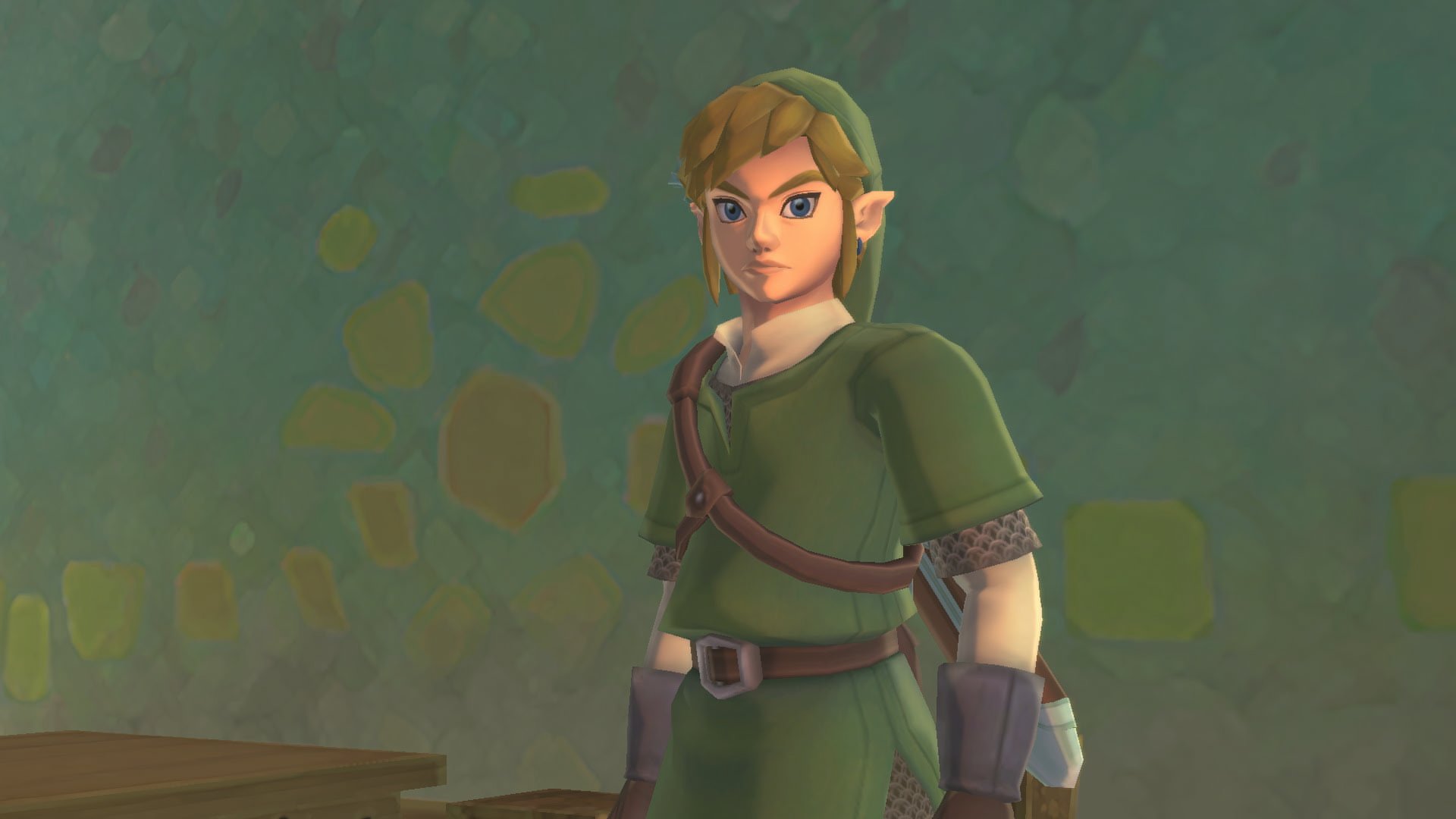

This game is more prescriptive, for better or worse, and plays more to its mechanics. Breath of the Wild is unrestrained and, well. It does, however, make Skyward Sword notably more machine-like than what followed it. And once you reach those dungeons and the bosses inside it is series’ best stuff. And like many of Skyward Sword’s ideas, it is used to great effect before the game moves on to something new. It’s the kind of temporal tinkering that Zelda excels at as you sweep between the past and the present.

But find the hidden timestones and give them a whack and it can turn back the clock lush green grass sprouts from the sand, flowers bloom and the broken remains of its mechanical guardians spring to vivid life. There is a section -the Lanaryu Mines- which starts as a dusty, decrepit wasteland.

You might be whisking yourself up swirling gusts of air, surfing down giant sandslips, bowling bombs into hard to reach places, snipping spider-threads with the flying bugwing. Each area is awash with lateral thinking, new gadgets and delights. But that isn’t a bad thing in itself, instead those clockwork and fiercely imaginative dungeons spill out into the land itself as you pursue Zelda. Where many Zeldas put a premium on the art of discovery and exploration of a wide-open land - Breath of the Wild being the apotheosis- Skyward Sword takes a more linear path. As the chosen one of the Goddess of Light, Link punches a hole in the clouds in typically heroic pursuit.įrom here it is an adventure that leans heavily into its mind-turning puzzles and dungeoneering. After completing his training to become a knight of Skyloft, Link’s childhood beau Zelda is whisked away to the land below by a force unknown. Other outposts and settlements are scattered on islands high above the unreachable, mythical ‘surface’ below. The denizens of this idyllic outcrop know of only life in the clouds, soaring across the air on giant Loftwing birds. As the young hero Link, you are an inhabitant of the floating town of Skyloft. Originally released for Wii in 2011, Skyward Sword is arguably the most compartmentalised and narrative-driven 3D Zeldas.
#Zelda and link skyward sword series
Skyward Sword has been maligned by many -not me, I hasten to add- but the idea that it lives as an outlier in Nintendo’s famous adventure series doesn’t bear true after this bewitching, retrospective visit on Switch.īut, my goodness, does it wear its differences too. Its fascinating, partly because Nintendo looks to be echoing Skyward Sword’s themes in the upcoming Breath of the Wild 2, but also due to how wildly different the games can be in practice. The beeping stamina meter that allows Link to scale vertical walls, beacons to place on your path as you explore its world, breakable shields and scuttling Bokoblin bad guys.
#Zelda and link skyward sword full
The Joy-Cons are expected to release alongside the HD version of the game on July 16.Ĭheck out the full announcement trailer below.One of the most striking things about revisiting The Legend of Zelda: Skyward Sword -a decade and two Nintendo consoles on- is how many seeds of ideas that would blossom in the heralded Breath of the Wild are buried within. To celebrate the occasion, Nintendo also announced a pair of custom Joy-Cons, themed after Skyward Sword. Button controls were also announced for the game, meaning that for the first time, Skyward Sword can also be played in handheld mode or while docked. According to Aonuma, on Switch, the controls should be smoother and "more intuitive" than they were on the original Wii release. Now, as detailed by series producer Eiji Aonuma, the Switch's Joy-Cons will operate in a similar manner. Originally, the game used the motion-based Wii Remote and Nunchuk to imitate Link's sword and shield, respectively. One interesting note about the rerelease is that Skyward Sword's control scheme has been remade for the Nintendo Switch. The Legend of Zelda: Skyward Sword is coming to the Nintendo Switch, Nintendo announced earlier today during its most recent Nintendo Direct livestream.


 0 kommentar(er)
0 kommentar(er)
